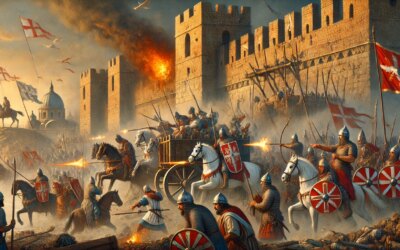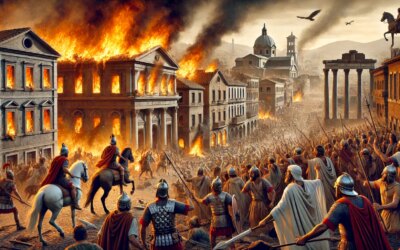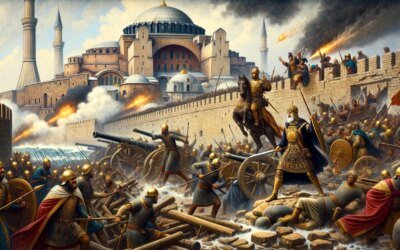The Gothic War: A Struggle for Italy
The Gothic War (535–554 CE) was one of the most destructive conflicts in Rome’s history. Fought between the Eastern Roman (Byzantine) Empire and the Ostrogoths, the war aimed to restore Italy to imperial control. However, instead of reinvigorating the city, it left Rome in ruins, marking one of the final blows to its ancient grandeur.
Belisarius and the Byzantine Reconquest
In 536 CE, the brilliant Byzantine general Belisarius entered Rome, reclaiming it from the Ostrogoths without resistance. However, his victory was short-lived. The Ostrogoths, under King Vitiges, launched a fierce siege in 537–538 CE. For over a year, Belisarius and his men defended the city against relentless attacks, while the population suffered from starvation and disease.
Rome’s Endless Cycle of Destruction
Though the Byzantines held the city, Rome changed hands multiple times throughout the war. The Ostrogoths recaptured it in 546 CE under King Totila, who ordered a mass deportation of its remaining citizens. The city was left nearly abandoned. When Belisarius retook Rome in 547 CE, it was a shadow of its former self.
The Final Years of the War
After years of devastating battles, the Byzantine commander Narses finally crushed the Ostrogoths in 552 CE, bringing Rome and Italy back under Eastern Roman rule. However, the victory came at a tremendous cost. The city’s population had dwindled to a fraction of its former size, its infrastructure was in ruins, and the economy lay in shambles.
Rome After the War
Though technically back under imperial control, Rome never regained its status as the capital of an empire. The war’s devastation contributed to the city’s decline into the medieval period, where it became a ghost of its ancient self. The once-great metropolis had been permanently transformed, no longer the heart of an empire but a city struggling to survive.
The Gothic War’s Legacy
The Gothic War was one of the final nails in the coffin of ancient Rome. It showcased the brutality of war and the shifting power struggles of the early medieval world. Though the Byzantines won, the true victor was time itself, as Rome transitioned from imperial majesty to medieval obscurity.






